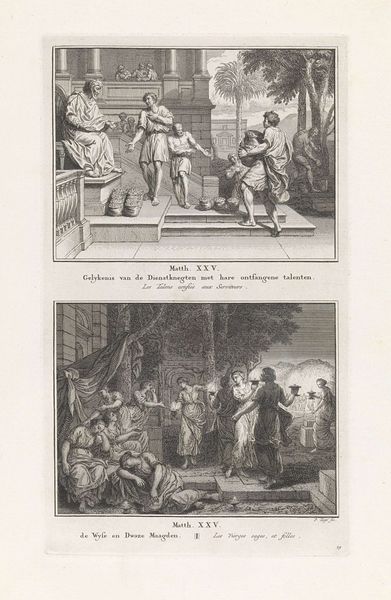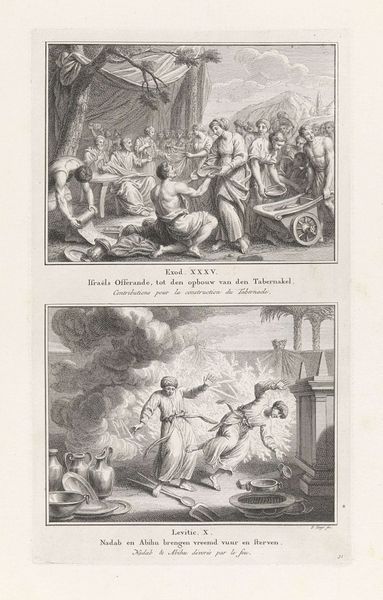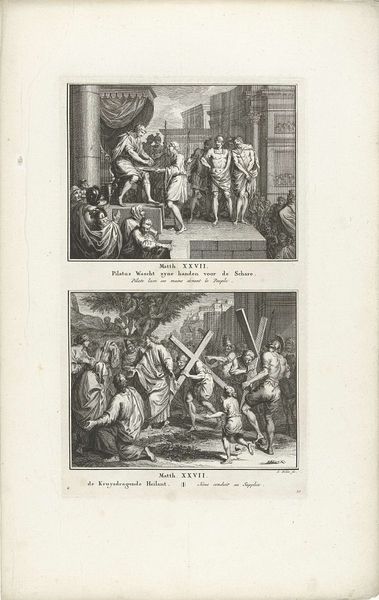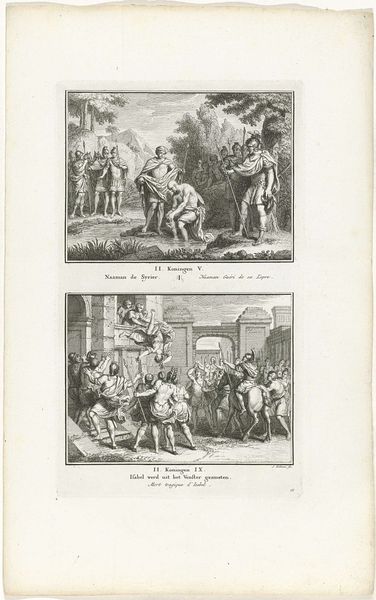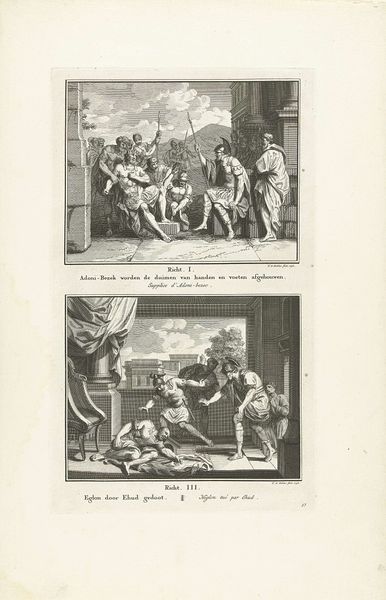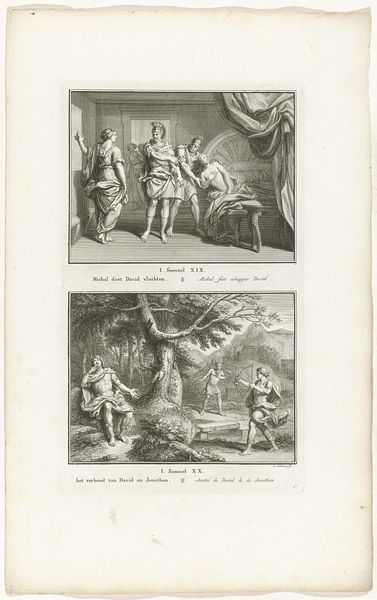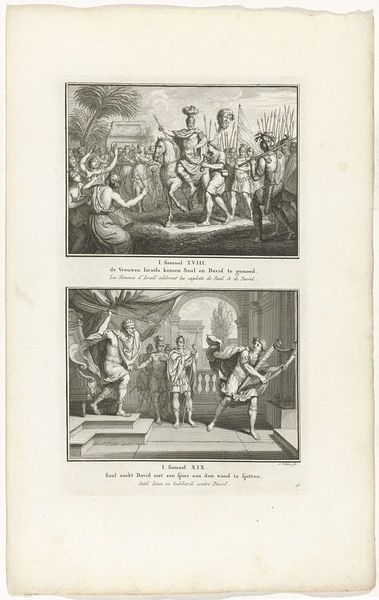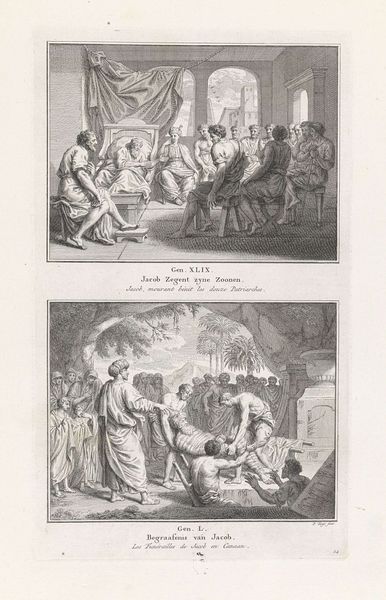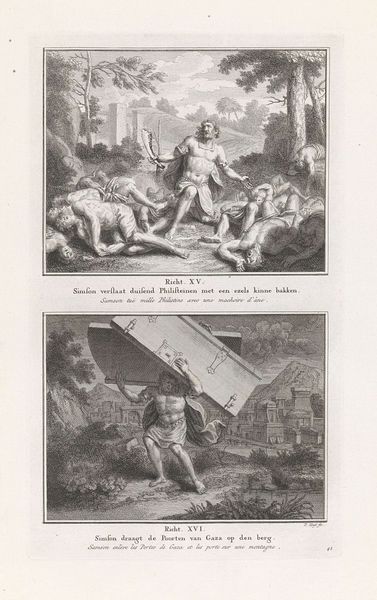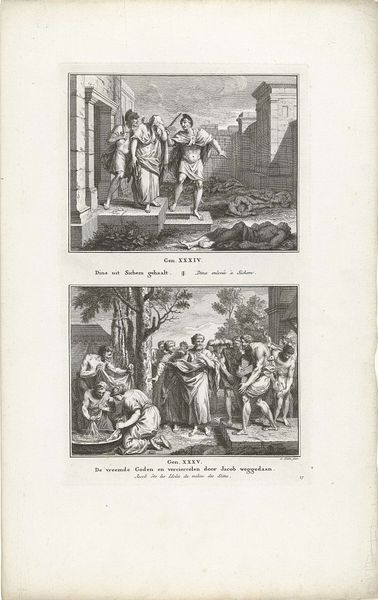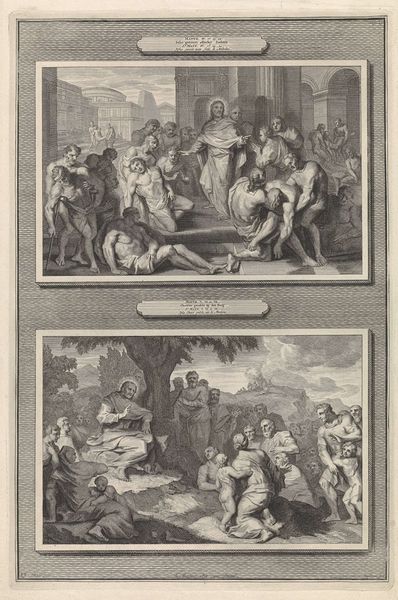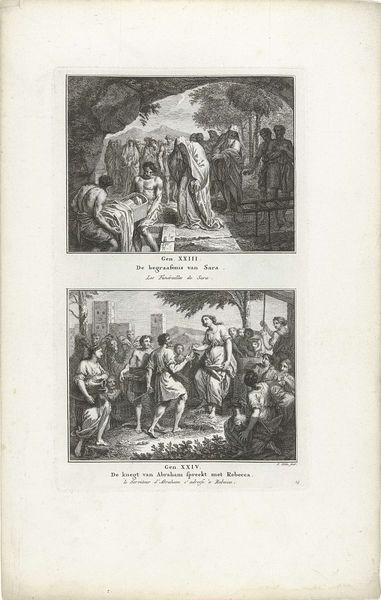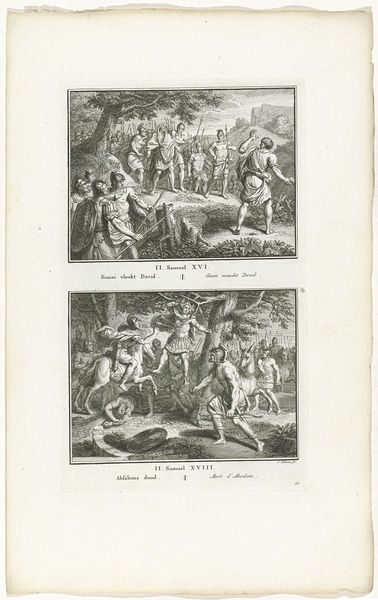
Simsons dood / De Benjaminieten schaken de vrouwen uit Silo 1716 - 1791
0:00
0:00
drawing, print, engraving
#
drawing
#
baroque
# print
#
old engraving style
#
figuration
#
history-painting
#
engraving
Dimensions: height 326 mm, width 194 mm
Copyright: Rijks Museum: Open Domain
Editor: This engraving from sometime between 1716 and 1791 by Pieter Tanjé depicts two scenes. The top one shows Samson destroying a temple, and below, some sort of abduction. There’s a definite tension to it, with all the frantic gestures. What do you make of its historical context and the way it represents these biblical scenes? Curator: It’s interesting how Tanjé uses a Baroque style to represent these Old Testament stories, isn’t it? Consider the role of printmaking at the time; engravings like this made biblical narratives accessible to a wider audience, shaping public understanding of these stories. The scenes become these dramatic historical events instead of religious learning tools, especially the abduction narrative, which might invite more thought about social upheaval in the viewer. Does the theatricality feel moralizing, or exploitative? Editor: I can see the drama, but moralizing might be right. The artist is definitely shaping how we’re meant to see this. So, the choice of this very dynamic, almost operatic style… is that common for religious prints of the time? Curator: The Baroque aesthetic amplified the emotional impact of these narratives, reinforcing specific interpretations. Also, look at the positioning of the images together; framing Samson's violent act of revenge, the abduction story invites contemplation on themes of power, conflict, and perhaps the justifications of violence in a time where that rhetoric of violence had political echoes across Europe. How might audiences then have related these biblical stories to contemporary societal issues? Editor: So, the art isn't just illustrating scripture. It's also kind of commenting on how power works in the world at that time. That makes me think about what parts of the stories they chose to depict, and why. Curator: Exactly. Art's purpose always plays a huge role, especially how an audience sees an art object as being informative or political. Editor: It’s amazing to consider that something that looks like simple illustrations could be part of larger conversations about violence and justice. I never thought about engravings this way.
Comments
No comments
Be the first to comment and join the conversation on the ultimate creative platform.
